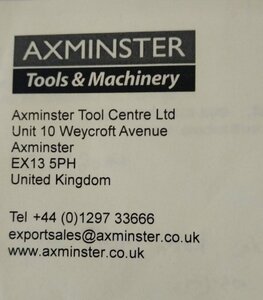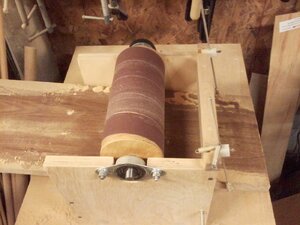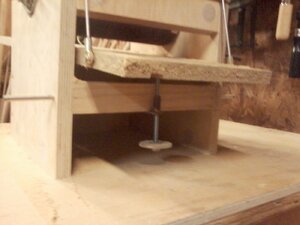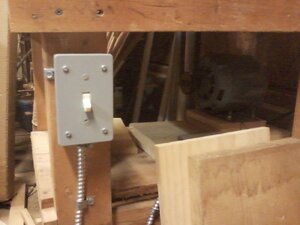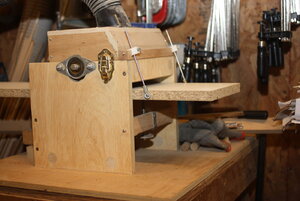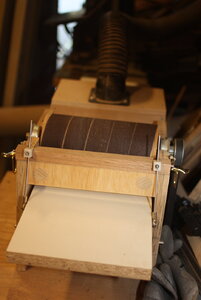In order to try and build the Blandford X-section I have tried to make a thickness planer from an ordinary hand planner. Unfortunately I'm not satisfied with the performance. When I try to make some plates and meassure different places the thickness may vary up to apr. 0,1 mm along the plate. Worst in the first few cm of both ends where I can even feel kinda waves. I don't think it can be improved to my satisfaction so I'm now considering alternatives:
1) I can give up scratch building, at least for the time being.
2) I can try making a thickness sander instead, but I have no idea if the outcome will be better than with the planner.
3) Already from the beginning I firmly decided that I would not spend the amount of money a DH 40 cost (also as I don't know with certainty if this is the one and only time it would ever be used). But now I have started asking myself again if the DH 40 could be considered. It does not make sense. Am I retarded? The definition of insanity is doing the same thing over and over again and expecting a different result. I have very clearly and unequivocally said NO!!! so why do I keep asking myself the same question again?
Unfortunately I used to be a Salesman so I'm not that easy to get rid of so I answer myself: 'Could be you had changed your mind? Or maybe I can persuade you with some good arguments to change your mind?' Thus I wonder if I can find some really good arguments to persuade myself. Using Google I can't find any information about the precision nor about the accuracy.
Questions to owners of DH40: Say you plane a couple of plates, e.g. 50 x 300 mm to a thicness of 6.35 mm and you measure the thickness with a micrometer screw gauge at different places, what is the max. variation you would find?
Questions to all: If being a real stickler, how much variation in thickness on frames /spants would be acceptable at scale 1:48?
PS: Byrnes thickness sander is out of the question (transport cost would be huge and Denmark has some of the highest taxes in the world so with VAT + import tax + fee for handling import declaration to customs etc. the price would end up at the wrong side of a month salary
1) I can give up scratch building, at least for the time being.
2) I can try making a thickness sander instead, but I have no idea if the outcome will be better than with the planner.
3) Already from the beginning I firmly decided that I would not spend the amount of money a DH 40 cost (also as I don't know with certainty if this is the one and only time it would ever be used). But now I have started asking myself again if the DH 40 could be considered. It does not make sense. Am I retarded? The definition of insanity is doing the same thing over and over again and expecting a different result. I have very clearly and unequivocally said NO!!! so why do I keep asking myself the same question again?
Unfortunately I used to be a Salesman so I'm not that easy to get rid of so I answer myself: 'Could be you had changed your mind? Or maybe I can persuade you with some good arguments to change your mind?' Thus I wonder if I can find some really good arguments to persuade myself. Using Google I can't find any information about the precision nor about the accuracy.
Questions to owners of DH40: Say you plane a couple of plates, e.g. 50 x 300 mm to a thicness of 6.35 mm and you measure the thickness with a micrometer screw gauge at different places, what is the max. variation you would find?
Questions to all: If being a real stickler, how much variation in thickness on frames /spants would be acceptable at scale 1:48?
PS: Byrnes thickness sander is out of the question (transport cost would be huge and Denmark has some of the highest taxes in the world so with VAT + import tax + fee for handling import declaration to customs etc. the price would end up at the wrong side of a month salary
Last edited:




